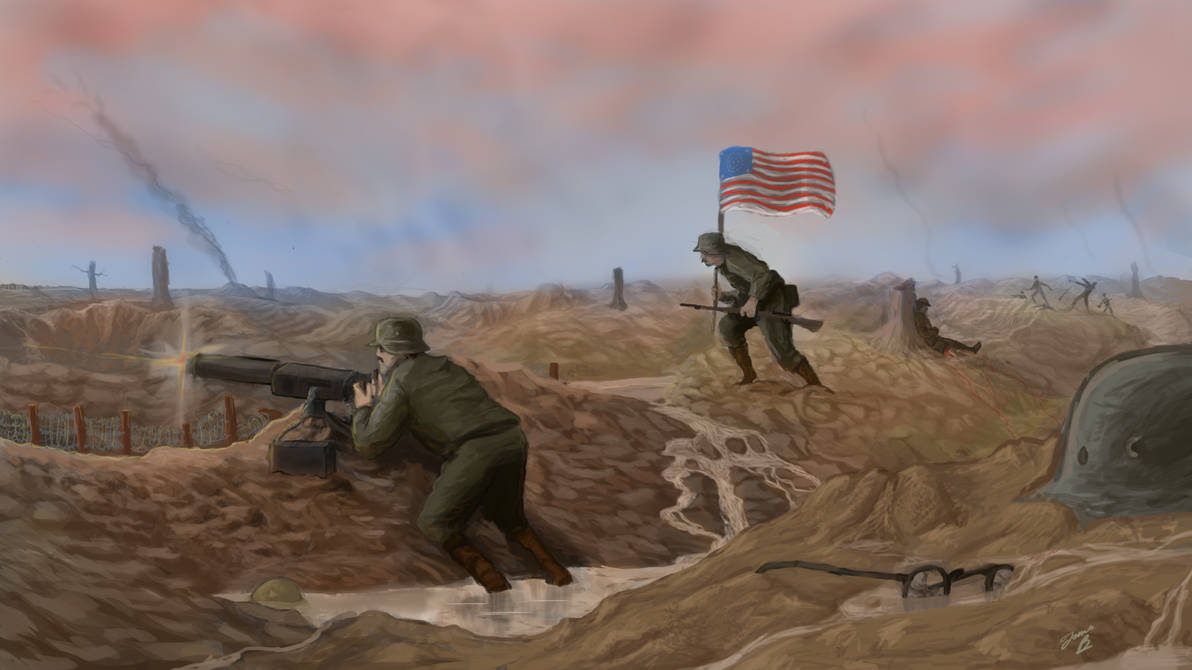You are using an out of date browser. It may not display this or other websites correctly.
You should upgrade or use an alternative browser.
You should upgrade or use an alternative browser.
Photos from Featherston's Confederacy/ TL-191
- Thread starter Alternatehistoryguy47
- Start date
-
- Tags
- the rising sun
What a Schanda fur die Goyim!Saul Goodman during a meeting with Jake Featherston circa 1941
“Let’s say, hypothetically, You invaded the Yankee Operation Barbarosa styled, President Jake.Saul Goodman during a meeting with Jake Featherston circa 1941
Let’s also say, for the Sale of Argument, You also attacked Pittsburgh as for their Resource and the Last strongholds from Philadelphia.
Now considering the following facts, Your armies in Pittsburgh literally getting Fucking Reckoned with Yankee soldier and Militiamen plus they got Captured by the Union Army.
The Natural Conclusion of this would that the Union Armies lead by Irving Fucking Morrell is now owned us with Fact and Logic.
Is it not then Reasonable to assume that We Currently would be Considered Fuck, Mr. President Jake”
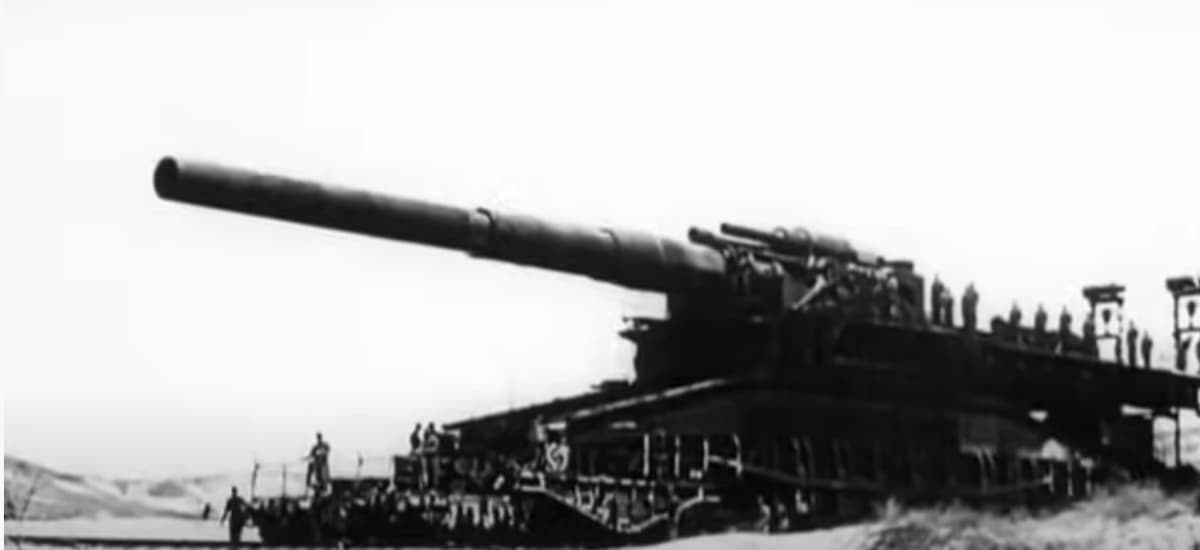
While Featherston never followed on nuclear power, he did authorize the creation of what would be the largest gun in history, the Stalwart Heavy, or as the troops nicknamed it, Dolly.
I didn't know that Saul Goldman's wife was a doctor. Harry must have mentioned it once and then never again. InterestingSaul Goodman during a meeting with Jake Featherston circa 1941
Last edited:
Operation Totenkopf - The Fall of France
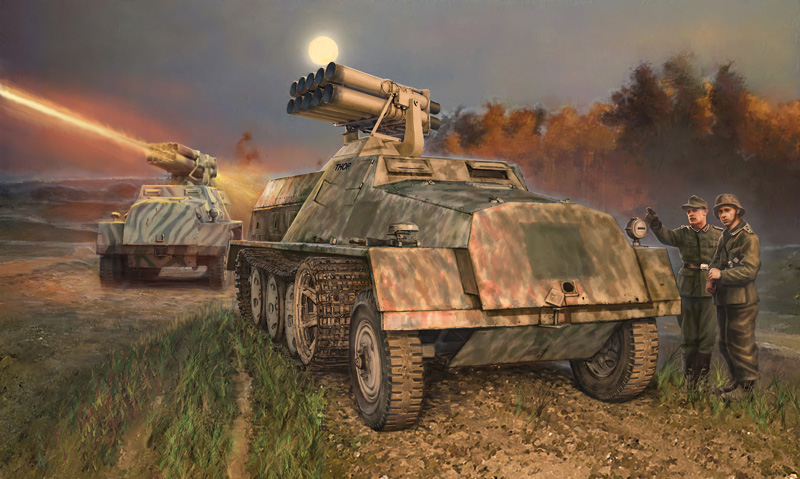
An artist's rendition of rocket artillery of the Imperial German Army firing a barrage on French positions along the Moselle River.
By the Spring of 1944, the French and British forces had found themselves in a defense war in comparison to two years earlier in 1942. In the French in particular had lost much of their finest troops and material during those two years during the brutal fighting in the Rhineland and in Alsace-Lorraine. The British were too in a similar position, as their forces have been stretched thin, not only on the Western Front, but also in Africa and in India. In addition, thanks to the efforts of the Kaiserliche Marine and the USN, both countries have largely been cut-off from imports of raw materials such as oil and rubber. However, both armies were still on the field and were at that point, readying to defend France from the might of the Imperial German Army.

British soldiers on the retreat near Grave in the Netherlands, circa October 1943.

The Frontline as of April 1944 on the Western Front.
In January of 1944, the German High Command would begin to draw up plans for an offensive on the Western Front, which was codenamed Operation Totenkopf (or Deathshead in German). The two pronged plan was to concentrate several armored and motorized units to make a drive toward the coastline of the English channel in the north, while in the south, another armored thrust was to strike at the rear of the French forces defending the Moselle River. To do this, the Germans would have 3,460,000 men, 3,256 artillery pieces, 3,166 barrels, 3,287 other armored vehicles, 4,174 trucks, 5,232 aircraft at their disposal for the operation. These forces were well equipped and some formations even fielded some of the latest gear that the German Arms Industry had to offer. In charge of the whole operation, was Field Marshall Gerd von Rundstedt, who was already experienced commander on the Western Front throughout the whole war.
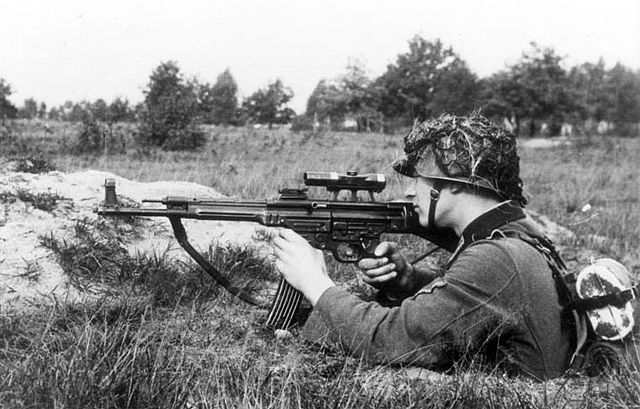
A German soldier armed with a Sturmgewehr-44 rifle during the Battle of the Mons. Many of the German assault troops would be equipped with this new weapon which fires a lighter rifle cartridge than the previous Mauser rifles.

A Fokker D. 262 "Sturmvogel" at an airbase outside of Strasburg, circa February 1944. The D. 262 fighter was by far the most advanced fighter of the Luftwaffe to-date with two turbo engines which gave it and edge over other fighters in terms of speed. During the Operation, these planes both provided air cover for the ground forces, some were also used as fast fighter-bombers.
In their plans for defense, the Anglo-French forces from the late autumn of 1943 to April of 44 would rebuild their armies from the heavy fighting of the previous year and to shore up their defenses. The French for their part, would create the so-called Home Army (or Armée à Domicile in French), which were divisions created to economized on personnel and were tailored for defensive situations. The French forces would also have a sizable number of divisions originating from their colonies. Meanwhile, the British had under their command the elements of the Free Belgian Army Corps and the 1st Free Canadian Army Corps. All-together, both armies had a total of 3,541,000 men, 3,655 artillery pieces, 5,477 barrels and other armored vehicles, and 2,580 aircraft. Leading these armies were Generals Charles Huntziger and Bernard Montgomery respectively. Much of their units however were of inferior quality compared to the troops from earlier in the war, as they had received not as much training. In addition, King Charles XI of France would make a decree on March 2nd 1944 which had the Milice Francaise establish blocking battalions that were to "Prevent any unauthorized retreat by French troops." This had came the day following a broadcast to the French people stating; "Every Frenchman is to make his stand against the German Invader."

A pair of French Home Army soldiers operating a Hotchkiss Model 1914 machine-gun, circa March of 1944.
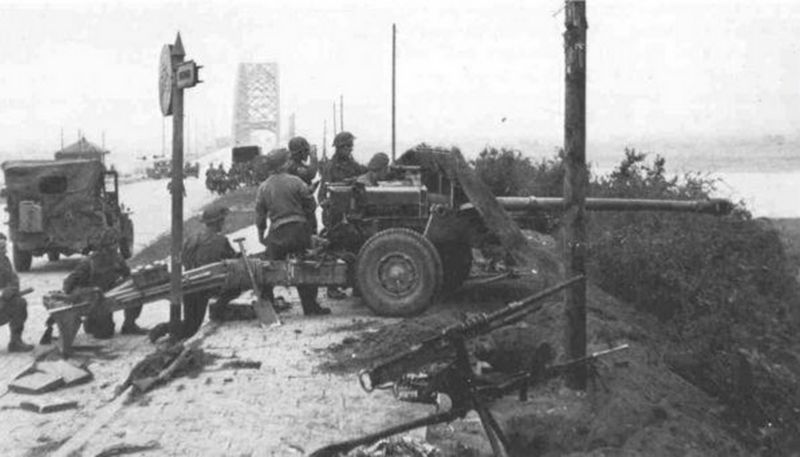
British gunners at a prepared position near the city of Rotterdam, circa March of 1944.
On the early hours of April 10th, 1944, the German artillery and aircraft would unleash a heavy barrage on the defensive positions of the Anglo-French forces in the Nancy, Sedan, Namur, and Antwerp sectors of the front. These barrages would last for two hours before the German mechanized units launched their attacks in earnest in those aforementioned sectors and would encounter a stiff and determined resistance from their enemies. But by April 12th, the Germans were able to make a breakthrough in the Mons sector and later than evening in the Sedan area. On the following day, Charles XI would order General Besson to make a counter-attack to the Sedan to try and plug the breach in the defenses. Unfortunately for Besson, much of the troops under his command were of the ill-trained Home Army troops and the counter-attack was repulsed. After a brief respite, the local German forces under the command of Fedor von Bock would start to advance southward to cut-off the French defenders on the Moselle River.

German soldiers on the advance in Flanders
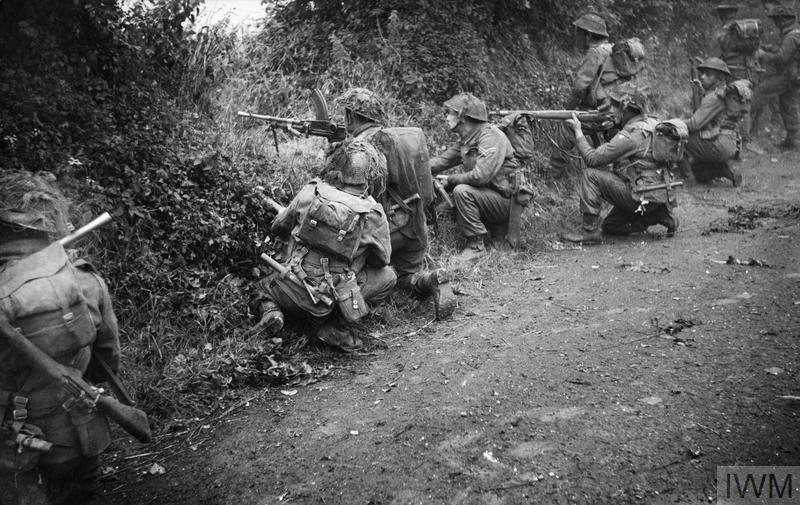
British soldiers defending their positions outside of Antwerp
On April 16th, the German armored formations would take the hamlet of Kloosterzande, which would cut the British defenders of Antwerp off from the rest of the Montgomery's forces in Belgium and in Northern France. Despite the efforts of the Germans to capture the city, Antwerp would remain in British hands until the very end of the conflict. The British forces in Northern France alongside with some of their French Allies would soon find themselves cut-off from the rest of French Army, when on April 21st, the German 5th Panzer Division occupied the coastal city of Berck. Over the next two days, the armies on both sides of the entrapment would make their best efforts to break the encirclement, but the Germans would thwart these efforts with the help of the Luftwaffe. The British led forces would soon find themselves being pushed back with their backs toward the sea. For the French to the south, the situation went from bad to worse as many French divisions on the Moselle Line soon found themselves in danger of being encircled from both the north and south. In spite of General Blanchard's requests for his men to retreat, King Charles XI would refuse to authorize such withdrawals. By April 23rd, the French stronghold at Nancy would soon find itself encircled, and for several days, the French would fight a determined but futile defense of the city before falling on April 29th.
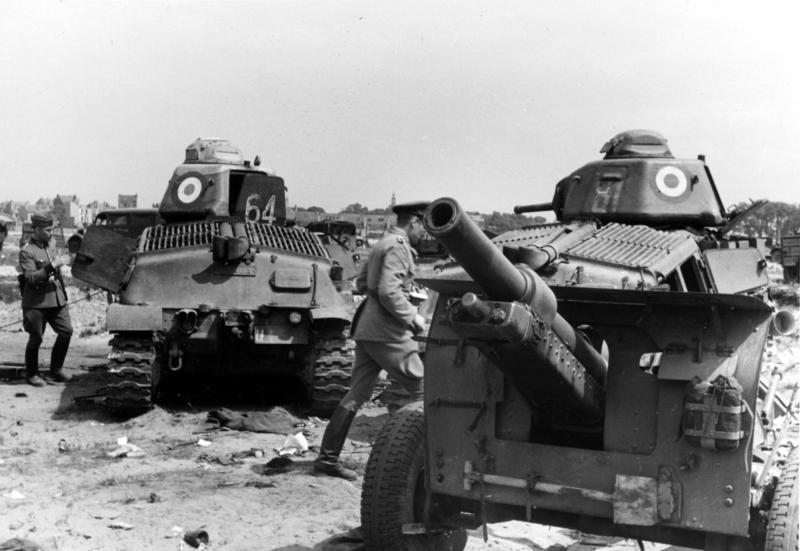
German soldiers inspecting knocked-out French barrels and field guns near Arras. By the stage of the conflict much like their infantry counter-parts, a majority of the French barrel-crews were ill-trained and inexperienced who were raised to replace previous losses.
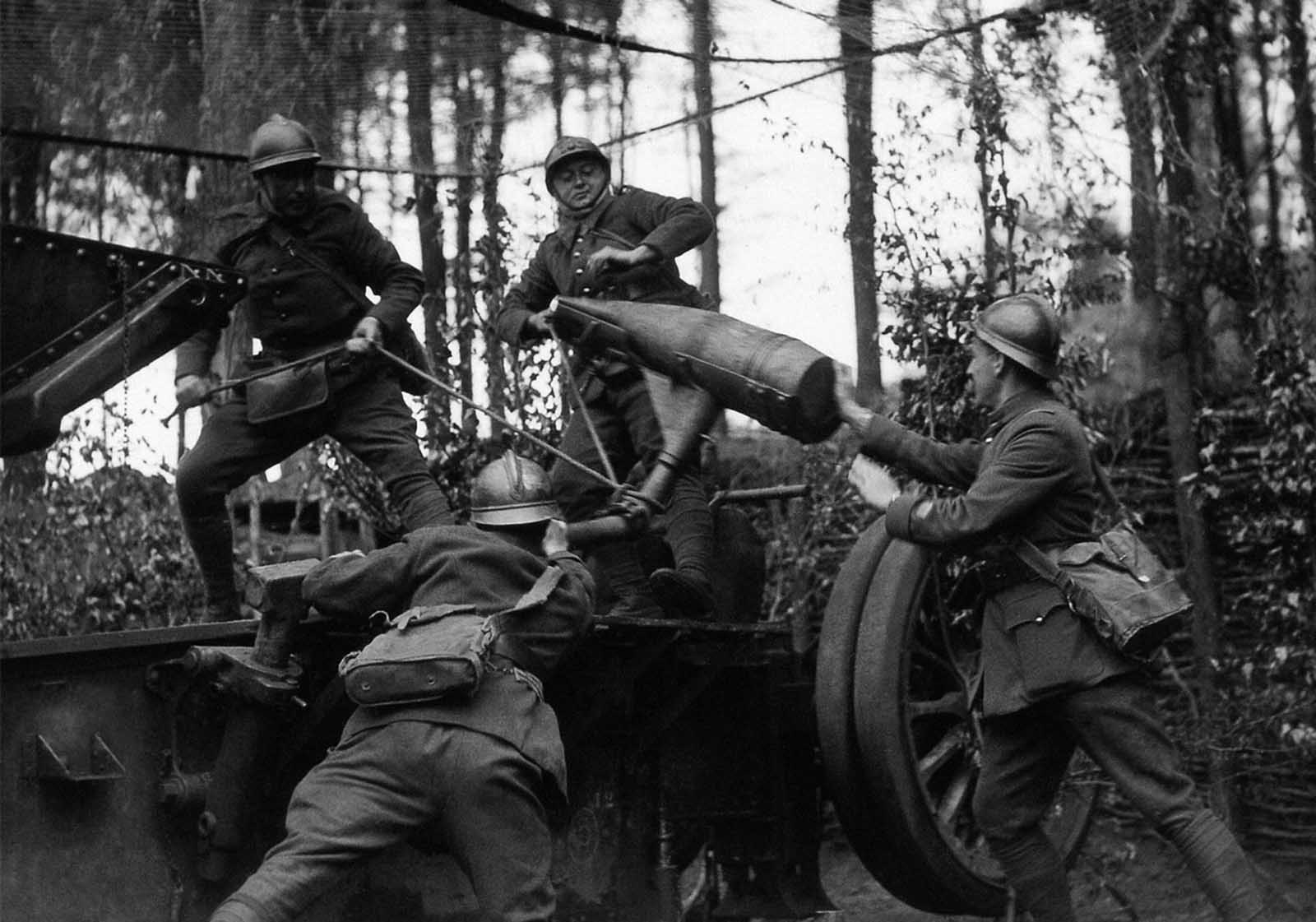
French gunners reloading a howitzer during the ferocious fighting on the Moselle River.
On May 4th, the forces under the command of General Heinz Guderian would encircle the city of Reims, trapping nearly 450,000 French soldiers along with the battered remnants of the 1st Free Canadian Corps before ordering his forward elements to march on Paris. On the following day on the 5th, his forward recon units would secure the city of Chateau-Thierry after an intense battle with some French Royal Guards. But before his forces could drive on Paris, the German High Command would order his units in Chateau-Thierry to halt and consolidate his forces. Three days later, the reason for the halting would become apparent.
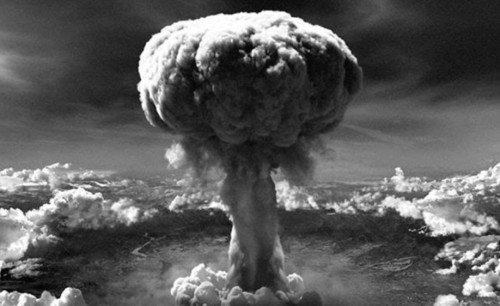
On May 7th, 1944 at 7:15 local time, a formation of three German bombers would drop the second Superbomb (codenamed Loki) on the city of Paris, which within a matter of seconds, much of the City of Light would be wiped off the map. An estimated 210,000-260,000 Parisians and a further 2,500 French Military personnel would perish in the bombing. Among the dead was King Charles XI, much of the big-shots of the Actionist Regime, and parts of the French High Command. The destructive bombing would leave large swathes of the French Army and Populace demoralized and disillusioned from continuing on with the war. A day after the bombing, a new government under the leadership of Joseph Darnand would be formed, but however, he and some of his loyalists would flee across the English Channel to Britain. Upon taking the helm as the new King, Louis XIX, would order his diplomats in Switzerland to meet with their German counterparts to negotiate an end to the conflict. On May 12th, a ceasefire agreement would be reached by both sides, but it would be on May 14th, 1944 in the town of Clermont, where Louis XIX would sign the surrender document, ending France's involvement in the Second Great War. Operation Totenkopf would come to it's conclusion when the British-led troops under General Miles Dempsey in the Dunkirk-Calais Pocket surrendered to German forces on May 19th.
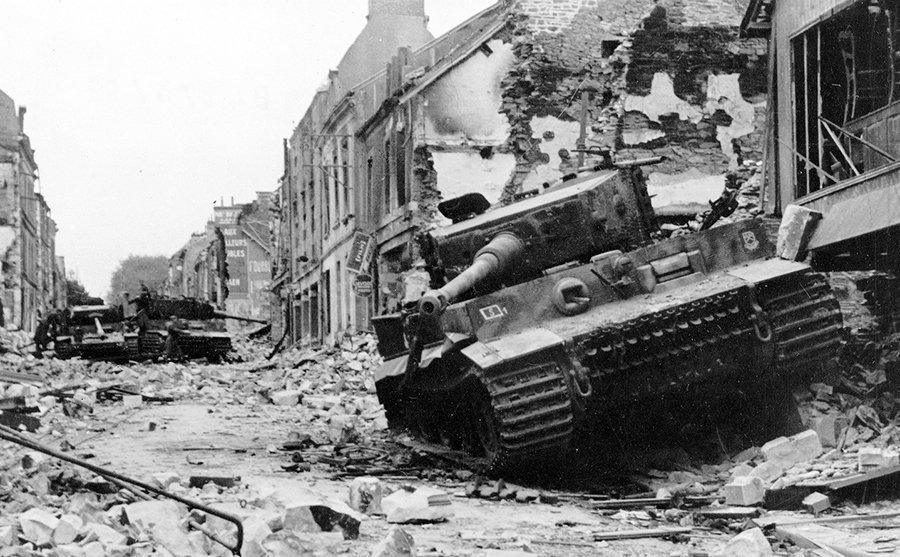
Several destroyed German Panzers in the ruins of the French town Amiens, circa June 1944.
The German forces would suffer 28,043 soldiers dead, 120,560 wounded, 604 missing, 971 AFVs destroyed, and 1,054 aircraft lost. The Radius forces (with French, British, Belgian, and Canadian troops) would suffer the loss of 382,604 casualties, 1.4 million captured, 2,541 vehicles destroyed, and 1,451 aircraft lost.

An artist's rendition of rocket artillery of the Imperial German Army firing a barrage on French positions along the Moselle River.
By the Spring of 1944, the French and British forces had found themselves in a defense war in comparison to two years earlier in 1942. In the French in particular had lost much of their finest troops and material during those two years during the brutal fighting in the Rhineland and in Alsace-Lorraine. The British were too in a similar position, as their forces have been stretched thin, not only on the Western Front, but also in Africa and in India. In addition, thanks to the efforts of the Kaiserliche Marine and the USN, both countries have largely been cut-off from imports of raw materials such as oil and rubber. However, both armies were still on the field and were at that point, readying to defend France from the might of the Imperial German Army.
British soldiers on the retreat near Grave in the Netherlands, circa October 1943.
The Frontline as of April 1944 on the Western Front.
In January of 1944, the German High Command would begin to draw up plans for an offensive on the Western Front, which was codenamed Operation Totenkopf (or Deathshead in German). The two pronged plan was to concentrate several armored and motorized units to make a drive toward the coastline of the English channel in the north, while in the south, another armored thrust was to strike at the rear of the French forces defending the Moselle River. To do this, the Germans would have 3,460,000 men, 3,256 artillery pieces, 3,166 barrels, 3,287 other armored vehicles, 4,174 trucks, 5,232 aircraft at their disposal for the operation. These forces were well equipped and some formations even fielded some of the latest gear that the German Arms Industry had to offer. In charge of the whole operation, was Field Marshall Gerd von Rundstedt, who was already experienced commander on the Western Front throughout the whole war.

A German soldier armed with a Sturmgewehr-44 rifle during the Battle of the Mons. Many of the German assault troops would be equipped with this new weapon which fires a lighter rifle cartridge than the previous Mauser rifles.

A Fokker D. 262 "Sturmvogel" at an airbase outside of Strasburg, circa February 1944. The D. 262 fighter was by far the most advanced fighter of the Luftwaffe to-date with two turbo engines which gave it and edge over other fighters in terms of speed. During the Operation, these planes both provided air cover for the ground forces, some were also used as fast fighter-bombers.
In their plans for defense, the Anglo-French forces from the late autumn of 1943 to April of 44 would rebuild their armies from the heavy fighting of the previous year and to shore up their defenses. The French for their part, would create the so-called Home Army (or Armée à Domicile in French), which were divisions created to economized on personnel and were tailored for defensive situations. The French forces would also have a sizable number of divisions originating from their colonies. Meanwhile, the British had under their command the elements of the Free Belgian Army Corps and the 1st Free Canadian Army Corps. All-together, both armies had a total of 3,541,000 men, 3,655 artillery pieces, 5,477 barrels and other armored vehicles, and 2,580 aircraft. Leading these armies were Generals Charles Huntziger and Bernard Montgomery respectively. Much of their units however were of inferior quality compared to the troops from earlier in the war, as they had received not as much training. In addition, King Charles XI of France would make a decree on March 2nd 1944 which had the Milice Francaise establish blocking battalions that were to "Prevent any unauthorized retreat by French troops." This had came the day following a broadcast to the French people stating; "Every Frenchman is to make his stand against the German Invader."

A pair of French Home Army soldiers operating a Hotchkiss Model 1914 machine-gun, circa March of 1944.

British gunners at a prepared position near the city of Rotterdam, circa March of 1944.
On the early hours of April 10th, 1944, the German artillery and aircraft would unleash a heavy barrage on the defensive positions of the Anglo-French forces in the Nancy, Sedan, Namur, and Antwerp sectors of the front. These barrages would last for two hours before the German mechanized units launched their attacks in earnest in those aforementioned sectors and would encounter a stiff and determined resistance from their enemies. But by April 12th, the Germans were able to make a breakthrough in the Mons sector and later than evening in the Sedan area. On the following day, Charles XI would order General Besson to make a counter-attack to the Sedan to try and plug the breach in the defenses. Unfortunately for Besson, much of the troops under his command were of the ill-trained Home Army troops and the counter-attack was repulsed. After a brief respite, the local German forces under the command of Fedor von Bock would start to advance southward to cut-off the French defenders on the Moselle River.

German soldiers on the advance in Flanders

British soldiers defending their positions outside of Antwerp
On April 16th, the German armored formations would take the hamlet of Kloosterzande, which would cut the British defenders of Antwerp off from the rest of the Montgomery's forces in Belgium and in Northern France. Despite the efforts of the Germans to capture the city, Antwerp would remain in British hands until the very end of the conflict. The British forces in Northern France alongside with some of their French Allies would soon find themselves cut-off from the rest of French Army, when on April 21st, the German 5th Panzer Division occupied the coastal city of Berck. Over the next two days, the armies on both sides of the entrapment would make their best efforts to break the encirclement, but the Germans would thwart these efforts with the help of the Luftwaffe. The British led forces would soon find themselves being pushed back with their backs toward the sea. For the French to the south, the situation went from bad to worse as many French divisions on the Moselle Line soon found themselves in danger of being encircled from both the north and south. In spite of General Blanchard's requests for his men to retreat, King Charles XI would refuse to authorize such withdrawals. By April 23rd, the French stronghold at Nancy would soon find itself encircled, and for several days, the French would fight a determined but futile defense of the city before falling on April 29th.

German soldiers inspecting knocked-out French barrels and field guns near Arras. By the stage of the conflict much like their infantry counter-parts, a majority of the French barrel-crews were ill-trained and inexperienced who were raised to replace previous losses.

French gunners reloading a howitzer during the ferocious fighting on the Moselle River.
On May 4th, the forces under the command of General Heinz Guderian would encircle the city of Reims, trapping nearly 450,000 French soldiers along with the battered remnants of the 1st Free Canadian Corps before ordering his forward elements to march on Paris. On the following day on the 5th, his forward recon units would secure the city of Chateau-Thierry after an intense battle with some French Royal Guards. But before his forces could drive on Paris, the German High Command would order his units in Chateau-Thierry to halt and consolidate his forces. Three days later, the reason for the halting would become apparent.

On May 7th, 1944 at 7:15 local time, a formation of three German bombers would drop the second Superbomb (codenamed Loki) on the city of Paris, which within a matter of seconds, much of the City of Light would be wiped off the map. An estimated 210,000-260,000 Parisians and a further 2,500 French Military personnel would perish in the bombing. Among the dead was King Charles XI, much of the big-shots of the Actionist Regime, and parts of the French High Command. The destructive bombing would leave large swathes of the French Army and Populace demoralized and disillusioned from continuing on with the war. A day after the bombing, a new government under the leadership of Joseph Darnand would be formed, but however, he and some of his loyalists would flee across the English Channel to Britain. Upon taking the helm as the new King, Louis XIX, would order his diplomats in Switzerland to meet with their German counterparts to negotiate an end to the conflict. On May 12th, a ceasefire agreement would be reached by both sides, but it would be on May 14th, 1944 in the town of Clermont, where Louis XIX would sign the surrender document, ending France's involvement in the Second Great War. Operation Totenkopf would come to it's conclusion when the British-led troops under General Miles Dempsey in the Dunkirk-Calais Pocket surrendered to German forces on May 19th.

Several destroyed German Panzers in the ruins of the French town Amiens, circa June 1944.
The German forces would suffer 28,043 soldiers dead, 120,560 wounded, 604 missing, 971 AFVs destroyed, and 1,054 aircraft lost. The Radius forces (with French, British, Belgian, and Canadian troops) would suffer the loss of 382,604 casualties, 1.4 million captured, 2,541 vehicles destroyed, and 1,451 aircraft lost.
Last edited:
Great to see a regular post after a while, Marlowski! It's a great, imagined finish to the Western Front of GW2. My only quibbles with it is the books and wiki describe Belgium and the Netherlands as already been taken back from the Germans by late 1943, and had been begun being used as bases for bombing runs. But I guess this may be more realistic and within a reasonable timeframe as Dr. Turledove doesn't give detail or a definitive log of events there. Also, the death toll according to NukeMap would realistically be ~250,000-260,000 deaths using a Fat Man bomb. It's to make a conjecture based on the capabilities of nukes at the time, and going for maximum damage as well. And that's not taking into account how bombed out Paris is up until then, so a good portion city's citizens would perhaps have already either died or fled.Operation Totenkopf - The Fall of France

An artist's rendition of rocket artillery of the Imperial German Army firing a barrage on French positions along the Moselle River.
By the Spring of 1944, the French and British forces had found themselves in a defense war in comparison to two years earlier in 1942. In the French in particular had lost much of their finest troops and material during those two years during the brutal fighting in the Rhineland and in Alsace-Lorraine. The British were too in a similar position, as their forces have been stretched thin, not only on the Western Front, but also in Africa and in India. In addition, thanks to the efforts of the Kaiserliche Marine and the USN, both countries have largely been cut-off from imports of raw materials such as oil and rubber. However, both armies were still on the field and were at that point, readying to defend France from the might of the Imperial German Army.
View attachment 758696
British soldiers on the retreat near Grave in the Netherlands, circa October 1943.
View attachment 758697
The Frontline as of April 1944 on the Western Front.
In January of 1944, the German High Command would begin to draw up plans for an offensive on the Western Front, which was codenamed Operation Totenkopf (or Deathshead in German). The two pronged plan was to concentrate several armored and motorized units to make a drive toward the coastline of the English channel in the north, while in the south, another armored thrust was to strike at the rear of the French forces defending the Moselle River. To do this, the Germans would have 3,460,000 men, 3,256 artillery pieces, 3,166 barrels, 3,287 other armored vehicles, 4,174 trucks, 5,232 aircraft at their disposal for the operation. These forces were well equipped and some formations even fielded some of the latest gear that the German Arms Industry had to offer. In charge of the whole operation, was Field Marshall Gerd von Rundstedt, who was already experienced commander on the Western Front throughout the whole war.

A German soldier armed with a Sturmgewehr-44 rifle during the Battle of the Mons. Many of the German assault troops would be equipped with this new weapon which fires a lighter rifle cartridge than the previous Mauser rifles.

A Fokker D. 262 "Sturmvogel" at an airbase outside of Strasburg, circa February 1944. The D. 262 fighter was by far the most advanced fighter of the Luftwaffe to-date with two turbo engines which gave it and edge over other fighters in terms of speed. During the Operation, these planes both provided air cover for the ground forces, some were also used as fast fighter-bombers.
In their plans for defense, the Anglo-French forces from the late autumn of 1943 to April of 44 would rebuild their armies from the heavy fighting of the previous year and to shore up their defenses. The French for their part, would create the so-called Home Army (or Armée à Domicile in French), which were divisions created to economized on personnel and were tailored for defensive situations. The French forces would also have a sizable number of divisions originating from their colonies. Meanwhile, the British had under their command the elements of the Free Belgian Army Corps and the 1st Free Canadian Army Corps. All-together, both armies had a total of 3,541,000 men, 3,655 artillery pieces, 5,477 barrels and other armored vehicles, and 2,580 aircraft. Leading these armies were Generals Charles Huntziger and Bernard Montgomery respectively. Much of their units however were of inferior quality compared to the troops from earlier in the war, as they had received not as much training. In addition, King Charles XI of France would make a decree on March 2nd 1944 which had the Milice Francaise establish blocking battalions that were to "Prevent any unauthorized retreat by French troops." This had came the day following a broadcast to the French people stating; "Every Frenchman is to make his stand against the German Invader."

A pair of French Home Army soldiers operating a Hotchkiss Model 1914 machine-gun, circa March of 1944.

British gunners at a prepared position near the city of Rotterdam, circa March of 1944.
On the early hours of April 10th, 1944, the German artillery and aircraft would unleash a heavy barrage on the defensive positions of the Anglo-French forces in the Nancy, Sedan, Namur, and Antwerp sectors of the front. These barrages would last for two hours before the German mechanized units launched their attacks in earnest in those aforementioned sectors and would encounter a stiff and determined resistance from their enemies. But by April 12th, the Germans were able to make a breakthrough in the Mons sector and later than evening in the Sedan area. On the following day, Charles XI would order General Besson to make a counter-attack to the Sedan to try and plug the breach in the defenses. Unfortunately for Besson, much of the troops under his command were of the ill-trained Home Army troops and the counter-attack was repulsed. After a brief respite, the local German forces under the command of Fedor von Bock would start to advance southward to cut-off the French defenders on the Moselle River.

German soldiers on the advance in Flanders

British soldiers defending their positions outside of Antwerp
On April 16th, the German armored formations would take the hamlet of Kloosterzande, which would cut the British defenders of Antwerp off from the rest of the Montgomery's forces in Belgium and in Northern France. Despite the efforts of the Germans to capture the city, Antwerp would remain in British hands until the very end of the conflict. The British forces in Northern France alongside with some of their French Allies would soon find themselves cut-off from the rest of French Army, when on April 21st, the German 5th Panzer Division occupied the coastal city of Berck. Over the next two days, the armies on both sides of the entrapment would make their best efforts to break the encirclement, but the Germans would thwart these efforts with the help of the Luftwaffe. The British led forces would soon find themselves being pushed back with their backs toward the sea. For the French to the south, the situation went from bad to worse as many French divisions on the Moselle Line soon found themselves in danger of being encircled from both the north and south. In spite of General Blanchard's requests for his men to retreat, King Charles XI would refuse to authorize such withdrawals. By April 23rd, the French stronghold at Nancy would soon find itself encircled, and for several days, the French would fight a determined but futile defense of the city before falling on April 29th.

German soldiers inspecting knocked-out French barrels and field guns near Arras. By the stage of the conflict much like their infantry counter-parts, a majority of the French barrel-crews were ill-trained and inexperienced who were raised to replace previous losses.

French gunners reloading a howitzer during the ferocious fighting on the Moselle River.
On May 4th, the forces under the command of General Heinz Guderian would encircle the city of Reims, trapping nearly 450,000 French soldiers along with the battered remnants of the 1st Free Canadian Corps before ordering his forward elements to march on Paris. On the following day on the 5th, his forward recon units would secure the city of Chateau-Thierry after an intense battle with some French Royal Guards. But before his forces could drive on Paris, the German High Command would order his units in Chateau-Thierry to halt and consolidate his forces. Three days later, the reason for the halting would become apparent.

On May 7th, 1944 at 7:15 local time, a formation of three German bombers would drop the second Superbomb (codenamed Loki) on the city of Paris, which within a matter of seconds, much of the City of Light would be wiped off the map. An estimated 485,000-800,000 Parisians and a further 2,500 French Military personnel would perish in the bombing. Among the dead was King Charles XI, much of the big-shots of the Actionist Regime, and parts of the French High Command. The destructive bombing would leave large swathes of the French Army and Populace demoralized and disillusioned from continuing on with the war. A day after the bombing, a new government under the leadership of Joseph Darnand would be formed, but however, he and some of his loyalists would flee across the English Channel to Britain. Upon taking the helm as the new King, Louis XIX, would order his diplomats in Switzerland to meet with their German counterparts to negotiate an end to the conflict. On May 12th, a ceasefire agreement would be reached by both sides, but it would be on May 14th, 1944 in the town of Clermont, where Louis XIX would sign the surrender document, ending France's involvement in the Second Great War. Operation Totenkopf would come to it's conclusion when the British-led troops under General Miles Dempsey in the Dunkirk-Calais Pocket surrendered to German forces on May 19th.

Several destroyed German Panzers in the ruins of the French town Amiens, circa June 1944.
The German forces would suffer 28,043 soldiers dead, 120,560 wounded, 604 missing, 971 AFVs destroyed, and 1,054 aircraft lost. The Radius forces (with French, British, Belgian, and Canadian troops) would suffer the loss of 382,604 casualties, 1.4 million captured, 2,541 vehicles destroyed, and 1,451 aircraft lost.
Last edited:
You should start a new thread compiling all your maps and battles from all the warsOperation Totenkopf - The Fall of France

An artist's rendition of rocket artillery of the Imperial German Army firing a barrage on French positions along the Moselle River.
By the Spring of 1944, the French and British forces had found themselves in a defense war in comparison to two years earlier in 1942. In the French in particular had lost much of their finest troops and material during those two years during the brutal fighting in the Rhineland and in Alsace-Lorraine. The British were too in a similar position, as their forces have been stretched thin, not only on the Western Front, but also in Africa and in India. In addition, thanks to the efforts of the Kaiserliche Marine and the USN, both countries have largely been cut-off from imports of raw materials such as oil and rubber. However, both armies were still on the field and were at that point, readying to defend France from the might of the Imperial German Army.
View attachment 758696
British soldiers on the retreat near Grave in the Netherlands, circa October 1943.
View attachment 758697
The Frontline as of April 1944 on the Western Front.
In January of 1944, the German High Command would begin to draw up plans for an offensive on the Western Front, which was codenamed Operation Totenkopf (or Deathshead in German). The two pronged plan was to concentrate several armored and motorized units to make a drive toward the coastline of the English channel in the north, while in the south, another armored thrust was to strike at the rear of the French forces defending the Moselle River. To do this, the Germans would have 3,460,000 men, 3,256 artillery pieces, 3,166 barrels, 3,287 other armored vehicles, 4,174 trucks, 5,232 aircraft at their disposal for the operation. These forces were well equipped and some formations even fielded some of the latest gear that the German Arms Industry had to offer. In charge of the whole operation, was Field Marshall Gerd von Rundstedt, who was already experienced commander on the Western Front throughout the whole war.

A German soldier armed with a Sturmgewehr-44 rifle during the Battle of the Mons. Many of the German assault troops would be equipped with this new weapon which fires a lighter rifle cartridge than the previous Mauser rifles.

A Fokker D. 262 "Sturmvogel" at an airbase outside of Strasburg, circa February 1944. The D. 262 fighter was by far the most advanced fighter of the Luftwaffe to-date with two turbo engines which gave it and edge over other fighters in terms of speed. During the Operation, these planes both provided air cover for the ground forces, some were also used as fast fighter-bombers.
In their plans for defense, the Anglo-French forces from the late autumn of 1943 to April of 44 would rebuild their armies from the heavy fighting of the previous year and to shore up their defenses. The French for their part, would create the so-called Home Army (or Armée à Domicile in French), which were divisions created to economized on personnel and were tailored for defensive situations. The French forces would also have a sizable number of divisions originating from their colonies. Meanwhile, the British had under their command the elements of the Free Belgian Army Corps and the 1st Free Canadian Army Corps. All-together, both armies had a total of 3,541,000 men, 3,655 artillery pieces, 5,477 barrels and other armored vehicles, and 2,580 aircraft. Leading these armies were Generals Charles Huntziger and Bernard Montgomery respectively. Much of their units however were of inferior quality compared to the troops from earlier in the war, as they had received not as much training. In addition, King Charles XI of France would make a decree on March 2nd 1944 which had the Milice Francaise establish blocking battalions that were to "Prevent any unauthorized retreat by French troops." This had came the day following a broadcast to the French people stating; "Every Frenchman is to make his stand against the German Invader."

A pair of French Home Army soldiers operating a Hotchkiss Model 1914 machine-gun, circa March of 1944.

British gunners at a prepared position near the city of Rotterdam, circa March of 1944.
On the early hours of April 10th, 1944, the German artillery and aircraft would unleash a heavy barrage on the defensive positions of the Anglo-French forces in the Nancy, Sedan, Namur, and Antwerp sectors of the front. These barrages would last for two hours before the German mechanized units launched their attacks in earnest in those aforementioned sectors and would encounter a stiff and determined resistance from their enemies. But by April 12th, the Germans were able to make a breakthrough in the Mons sector and later than evening in the Sedan area. On the following day, Charles XI would order General Besson to make a counter-attack to the Sedan to try and plug the breach in the defenses. Unfortunately for Besson, much of the troops under his command were of the ill-trained Home Army troops and the counter-attack was repulsed. After a brief respite, the local German forces under the command of Fedor von Bock would start to advance southward to cut-off the French defenders on the Moselle River.

German soldiers on the advance in Flanders

British soldiers defending their positions outside of Antwerp
On April 16th, the German armored formations would take the hamlet of Kloosterzande, which would cut the British defenders of Antwerp off from the rest of the Montgomery's forces in Belgium and in Northern France. Despite the efforts of the Germans to capture the city, Antwerp would remain in British hands until the very end of the conflict. The British forces in Northern France alongside with some of their French Allies would soon find themselves cut-off from the rest of French Army, when on April 21st, the German 5th Panzer Division occupied the coastal city of Berck. Over the next two days, the armies on both sides of the entrapment would make their best efforts to break the encirclement, but the Germans would thwart these efforts with the help of the Luftwaffe. The British led forces would soon find themselves being pushed back with their backs toward the sea. For the French to the south, the situation went from bad to worse as many French divisions on the Moselle Line soon found themselves in danger of being encircled from both the north and south. In spite of General Blanchard's requests for his men to retreat, King Charles XI would refuse to authorize such withdrawals. By April 23rd, the French stronghold at Nancy would soon find itself encircled, and for several days, the French would fight a determined but futile defense of the city before falling on April 29th.

German soldiers inspecting knocked-out French barrels and field guns near Arras. By the stage of the conflict much like their infantry counter-parts, a majority of the French barrel-crews were ill-trained and inexperienced who were raised to replace previous losses.

French gunners reloading a howitzer during the ferocious fighting on the Moselle River.
On May 4th, the forces under the command of General Heinz Guderian would encircle the city of Reims, trapping nearly 450,000 French soldiers along with the battered remnants of the 1st Free Canadian Corps before ordering his forward elements to march on Paris. On the following day on the 5th, his forward recon units would secure the city of Chateau-Thierry after an intense battle with some French Royal Guards. But before his forces could drive on Paris, the German High Command would order his units in Chateau-Thierry to halt and consolidate his forces. Three days later, the reason for the halting would become apparent.

On May 7th, 1944 at 7:15 local time, a formation of three German bombers would drop the second Superbomb (codenamed Loki) on the city of Paris, which within a matter of seconds, much of the City of Light would be wiped off the map. An estimated 210,000-260,000 Parisians and a further 2,500 French Military personnel would perish in the bombing. Among the dead was King Charles XI, much of the big-shots of the Actionist Regime, and parts of the French High Command. The destructive bombing would leave large swathes of the French Army and Populace demoralized and disillusioned from continuing on with the war. A day after the bombing, a new government under the leadership of Joseph Darnand would be formed, but however, he and some of his loyalists would flee across the English Channel to Britain. Upon taking the helm as the new King, Louis XIX, would order his diplomats in Switzerland to meet with their German counterparts to negotiate an end to the conflict. On May 12th, a ceasefire agreement would be reached by both sides, but it would be on May 14th, 1944 in the town of Clermont, where Louis XIX would sign the surrender document, ending France's involvement in the Second Great War. Operation Totenkopf would come to it's conclusion when the British-led troops under General Miles Dempsey in the Dunkirk-Calais Pocket surrendered to German forces on May 19th.

Several destroyed German Panzers in the ruins of the French town Amiens, circa June 1944.
The German forces would suffer 28,043 soldiers dead, 120,560 wounded, 604 missing, 971 AFVs destroyed, and 1,054 aircraft lost. The Radius forces (with French, British, Belgian, and Canadian troops) would suffer the loss of 382,604 casualties, 1.4 million captured, 2,541 vehicles destroyed, and 1,451 aircraft lost.
I already got a map thread on here: https://www.alternatehistory.com/forum/threads/tl-191-map-thread-redux.482561/You should start a new thread compiling all your maps and battles from all the wars
Ah right. Just the battles then. Although you could include the maps when they’re neededI already got a map thread on here: https://www.alternatehistory.com/forum/threads/tl-191-map-thread-redux.482561/
Last edited:
Just a heads-up: Wolfgang is exclusively a given name, not a family name. Wilhelm is also much more a given name than a family name, though not exclusively so. You might be interested in a thread about names I did last year.View attachment 763698Georg Otto Wilhelm (August 20, 1917 – August 4, 1967) was a German Politician and Neo-Freedomite. In 1958, he was discharged from the German Navy because of his political views and then founded the German Freedomite Party. He denied Population Reduction and believed that Joachim Prinz (Jewish Leader of the Jewish Civil Rights Movement in Germany) was a tool for Negro Marxists trying to control the White German Community. He blamed the Jewish Civil Rights Movement on the Negros. He viewed Featherston as the "White savior of the twentieth century". He viewed Jewish people as a primitive, lethargic religion and ethnicity who desired corruption and a life of envy and greed. He supported the resettlement of all Jewish Germans in a new Jewish state to be funded by the German government. As a supporter of racial seperation, he agreed with and quoted many leaders of the Jewish separatism movement. In later years, Wilhelm because increasingly aligned with other Neo-Freedomite groups, leading the World Union of Freeedomers. Wilhelm was shot and killed in Dresden by Hans Wolfgang, a former party member expelled by Wilhelm for alleged "Socialist leanings".
I changed the names.Just a heads-up: Wolfgang is exclusively a given name, not a family name. Wilhelm is also much more a given name than a family name, though not exclusively so. You might be interested in a thread about names I did last year.
Good work, looks much more realistic now.I changed the names.
if TL-191 movie had a version of Inglorious Bastards Carve a F on a poor Freddom Party Members foreheads with a knife i think been gone too much.
Carve F to pay Remembrance.if TL-191 movie had a version of Inglorious Bastards Carve a F on a poor Freddom Party Members foreheads with a knife i think been gone too much.
Would qny of yall be interested in a collaboration TL where Featherstone is killed at the end of the Great War?
Would there be another group who comes to power? The Redemption League or Huey Long's Radical Liberals are a good possibility.Would qny of yall be interested in a collaboration TL where Featherstone is killed at the end of the Great War?
Share:
